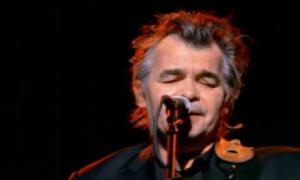Book Review: Democratic Orators from JFK to Barack Obama
April 27, 2016
Speechwriters get short shrift in otherwise solid analysis of Democratic rhetoric.
Democratic Orators From JFK to Barack Obama (Edited by: Andrew Crines, David S. Moon and Robert Lehrman (Palgrave, 2016)
You can’t judge a book by its cover—or, in this case, its foreword, written by former Congressman David Bonior (D-MI). He provides some lively comments to begin Democratic Orators From JFK to Barack Obama, which consists of scholarly papers profiling 12 key Democratic leaders and their respective uses of rhetoric and oratory to appeal to different audiences. The book covers about five decades, starting with JFK and ending with Barack Obama.
Bonior’s foreword references how the role of speechwriters is “often and regrettably concealed.” Bonior announces that this volume, published by UK-based Palgrave, explores their work “with candour.”
This whetted my appetite, and I immediately turned to the book’s index to get an idea of all the key Democratic speechwriters mentioned. Imagine my surprise when I found that the index actually mentions just two speechwriters by name—“Shrum, Bob” and “Sorensen, Theodore.”
The index omits the names of the numerous speechwriters actually cited in the book (e.g., Lissa Muscatine, Robert Rackleff, Peter Edelman, Michael Waldman, Richard Goodwin, Robert Hardesty, David Kusnet, Adam Walinsky, Horace Busby and others)—which is another form of concealment, you might say, and more than a little ironic, given Bonior’s foreword.
To be fair to this book and its editors (including former White House speechwriter Robert Lehrman), we must acknowledge what it is they set out to do, and then evaluate accordingly. Democratic Orators was not intended as a practical “how-to” book on rhetoric. Rather, it is an academically-minded look at “how-it’s-done”—how prominent Democrats have used rhetoric to appeal to party members, the wider party base and the broader American population.
This includes copious references to Aristotle’s rhetorical theory, and examples of Democratic leaders using rhetorical tactics such as alliteration, repetition, narrative, quotations, lists, etc. in their speeches. The book also illustrates Democrats’ reliance on rhetorical structures such as Monroe’s motivated sequence or jeremiads.
If scholarly analysis of rhetorical technique is your thing, then the chapters about Jesse Jackson and John Edwards may be the best in the entire book.
Those who are drawn to titles like this hoping to learn more about speechwriters specifically, will likely enjoy the chapters on President Kennedy, Robert F. Kennedy and President Carter the most. Each explores the interaction between speechwriter and principal.
The rest of the book is long on interesting examples of Democratic rhetorical excellence, both on the campaign trail and in office, but short on explaining the role of speechwriters in the same level of detail as the three chapters mentioned above.
All in all, for what it is, Democratic Orators is a well-hit double—not a home run, but a respectable effort.



